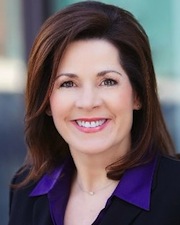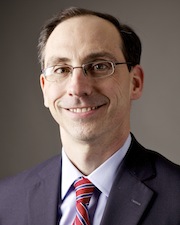Questioning the Calculations |
College Promise Programs | Donate! 


What’s AHEAD Commentary [Poll 7]
To join the discussion on these commentaries, please visit our Facebook page:
https://www.facebook.com/PennAHEAD
College Affordability: Is Free Community College Tuition the Answer?
In our seventh What’s AHEAD poll, we focused on college affordability and the possibility of making community colleges tuition-free. We invited four leading scholar-practitioners to comment: Dr. Martha Kanter, Distinguished Professor of Higher Education at New York University, and three Penn GSE Alumni—Dr. Ken Saunders, Dr. Stacy Sweeney, and Dr. Scott Flanagan.
The College Promise for Responsible Community College Students:
A Pathway to a More Prosperous Future for All

Martha J. Kanter
Distinguished Professor of Higher Education
New York University
Today, the U.S. needs a more educated workforce to better compete on the world stage. Yet, rising college costs and skyrocketing student debt threaten access to a college education for millions of Americans. Given this reality, a new idea is percolating.
The U.S. needs to invest in America by guaranteeing responsible students access to the first two years of their postsecondary education at their local community college, at no financial cost.
Advancing this idea is the College Promise Campaign’s mission. It is a mission to address three concerns.
First, the U.S. needs to do a better job of maximizing the power of its education system to prepare America to compete internationally. Second, rising college costs and debt threaten to foreclose the promise of college as a path to a better life for too many poor and middle class families. Finally, there is the concern that the current spiral of increasing college debt endangers America’s economy and social fabric, forcing people to put off decisions to start a family, buy a car or a home, and risk their ability to ever successfully become debt free.
The College Promise Campaign asserts that America must provide at least two years of a community college education to responsible students. This incentive would enable students to continue their education beyond high school, providing a pathway for economic and societal success while containing some of the high costs of a college education.
Our bi-partisan campaign, which was announced by President Obama on September 9 and is chaired by Dr. Jill Biden and former Wyoming Governor Jim Geringer, supports local, state, and national efforts to provide a free community college education for responsible students. To accomplish its mission, the Campaign will showcase robust examples of high impact College Promise programs drawn from the more than 100 local and statewide initiatives, and increase communications and advocacy to expand the Promise exponentially.
The College Promise Campaign’s mission seeks to expand the level of research about these programs, buttressing the information in the public policy arena through evidence-based best practices.
The Campaign is fortunate to benefit from the expertise of the University of Pennsylvania’s Alliance for Higher Education and Democracy, led by Dr. Laura Perna, to study the impact of College Promise programs in the years ahead.
Today’s poll of Penn’s Executive Doctorate in Higher Education Management alumni is the start of new research providing vital information about the public’s level of concern about higher education costs. The poll informs our task ahead in promoting successful College Promise programs and communicating the real benefits of a free community college education for responsible students to educators, the public, community leaders, business, and government.
While the benefits of free community college tuition would seem obvious, there has been minimal comprehensive research examining the effects of College Promise programs. The results of the AHEAD poll emphasize the need to use research as a strategic tool to better demonstrate the effects of the College Promise on postsecondary access and success, lifetime earnings, and civic and societal lifetime contributions after college. We believe a high school diploma is necessary but insufficient for success in the 21st century.
Ultimately, we want to know whether the lower college cost burden and social impact of these programs positively affects the long term health, happiness, and economic prosperity of students and families, and, finally, whether the College Promise improves how Americans view the impact of government as partners with education, business, and philanthropy in strengthening our communities, states, and nation.
Martha J. Kanter, Ed.D., is a distinguished professor of higher education at New York University and directs the College Promise Campaign in Washington, D.C. For more information, please visit www.headsupamerica.us and www.collegepromise.org
Funding x in the (A + x = C) Free Community College Equation
A=Access x=Funding of Support Services C=Completion
Kenneth K. Saunders
Executive Vice President
Nassau Community College
The proposal for free community college education is one that brings to the forefront two critical issues—access and completion. The proposal put forth by President Obama clearly addresses the issue of access and the associated costs with opportunities created for hundreds of students to attend college, and complete their first two years of postsecondary education with no financial outlay. The unaddressed component in the free community college equation that must now be managed is the resources necessary to actually guarantee, or at the very minimum improve, the completion rate of students in community colleges. This includes the funding of critical resources necessary to provide essential support services including: academic advising, remedial student services, mentoring, comprehensive first-year experience programs, and in many instances, psychological counseling necessary to help students make the transition into the community college system. Such extensive support services will need to be financed at a level that strengthens the institution’s commitment to moving students through the two-year experience successfully. In most instances, this would mean doubling the allocation of resources to student services budgets in addition to significant increases in full-time faculty.
Yes! The proposal of a two-year tuition-free community college is an excellent one—in theory. However, for it to carry weight in our lived realities there are several aspects with regards to its implementation that have to be addressed. The fact that free community college will give students, both low income and middle class, an opportunity to get the first two years of education at no cost is in and of itself an incentive, but the tools and services necessary to support students once they are in the community colleges would need to be financed in ways that are comparable to the increase in the number of students entering the system. This financing is absolutely essential for students to complete two-year degrees. Thus, the question becomes how federal and state lawmakers will identify financial resources to support the access AND completion equation for free community college education.
Competing with America’s College Promise Program

Stacy L. Sweeney
President
Bay State College
The Obama Administration’s increased efforts to promote free community college tuition have prompted spirited discussions at higher education institutions across the country. Small, private, tuition-driven colleges in particular worry that this new initiative will just pile onto an already long list of issues that negatively impact enrollment and financial stability. At my own college, discussions on lowering tuition, offering more scholarships and building value around the student experience in a small college setting were offered as potential ways to compete with the free community college tuition program. Our discussions led to the more obvious question: “How does a small tuition-driven institution compete with a potential game changer such as free community college tuition programs?” Our answer was to decide against a reactionary approach and focus on how to better support the intent of the program; that of increasing the number of college graduates in the United States.
America’s College Promise Program is intended to increase the number of college graduates in the United States. A major component of the program is to attract those students who are not going to college and would not have considered attending due to affordability. The idea is that offering a college degree for free will ensure an increase in the number of college graduates in the United States. The Promise Plan has been offered up as a solution to drastically increase the number of students enrolled in community colleges across the United States, ultimately resulting in an increased number of college graduates.
The belief is that those most positively impacted would be low-income, at-risk students; however, these students already have the ability to take advantage of one form of free community college tuition through use of the Pell Grant. The maximum Pell Grant of $5,775 in 2015/16 surpasses the tuition and fees of many community colleges across the country, where average annual tuition is approximately $3,400 (College Board, 2015). Thus affordability may not be the main issue, but instead, other factors such as a lack of college preparedness, which would need to be addressed in order to better attract and retain this population.
It could very well turn out that the students who decide to take advantage of the Promise Program are those students who already planned on going to college but are not eligible for the Pell Grant—students planning to attend a four-year college but instead decide on community college. If so, then four-year institutions need to embrace the Promise Program instead of competing and find ways to support the efforts at the community college level to allow for a more seamless transfer to their institutions.
Community colleges play an important role as a pathway for students earning their four-year degree. To allow for a more seamless transition, four-year institutions must step up their efforts by forging more articulation agreements with community colleges, increase recruitment efforts for transfer students, and identify ways to work closely with community colleges to improve retention and completion rates. College preparedness and completion issues will not disappear with free or discounted tuition; however, a concerted effort on the part of four-year institutions and community colleges sharing resources and solutions could make all the difference.
Unintended Consequences Likely Outweigh Benefits of Free Community College

Scott Flanagan
President
Edgewood College
Increasing access to and completion of higher education is an essential goal for American society. Community colleges certainly play a critical role in this work. The idea of free community college tuition in pursuit of that goal, however, is problematic.
Many students from underrepresented backgrounds under-match; that is, they often enroll in less academically enriching educational environments than they are qualified to pursue. Further, research suggests that many of these same students succeed at institutions that are able to provide individual attention and deeply engaging learning experiences—practices that inherently carry additional costs, often reflected in higher tuition rates. In addition, the pipelines between two- and four-year colleges are notoriously leaky. The idea that students will start at two-year colleges and transfer to four-year schools makes perfect sense theoretically; research shows that it simply doesn’t happen that smoothly. On the whole these reasons suggest that free community college may actually decrease the likelihood for college completion (whether at two- or four-year colleges) by the population that it intends to serve.
In addition, it is impossible ensure that affluent students who are able to afford other types of institutions might not choose to attend no-cost community colleges. To the extent to which that is the case, resources spent subsidizing such students are resources diverted from those who have the greatest need. Portable, student-based financial aid programs—such as the Pell grant—target financial resources directly to the students in greatest need; in fact, the net cost of community college attendance for Pell-eligible students is likely near zero already.
Community colleges are an important component of a successful educational system, and free community college makes for a great sound bite in pursuit of a worthwhile societal goal. As a tool to increase enrollment and completion of underrepresented students in a cost-effective manner, however, free community college leaves much to be desired.
To join the discussion on these commentaries, please visit our Facebook page: https://www.facebook.com/PennAHEAD



